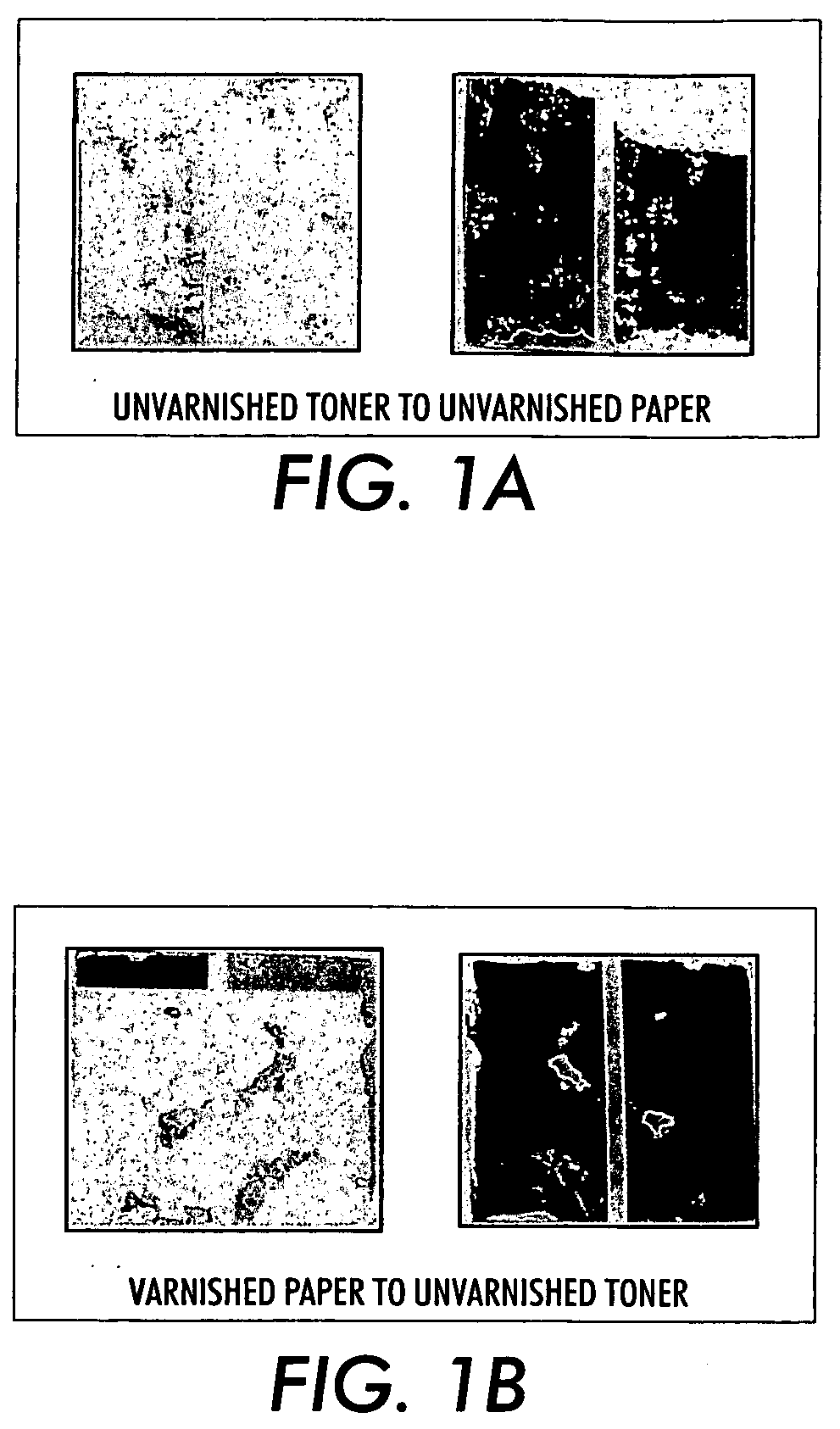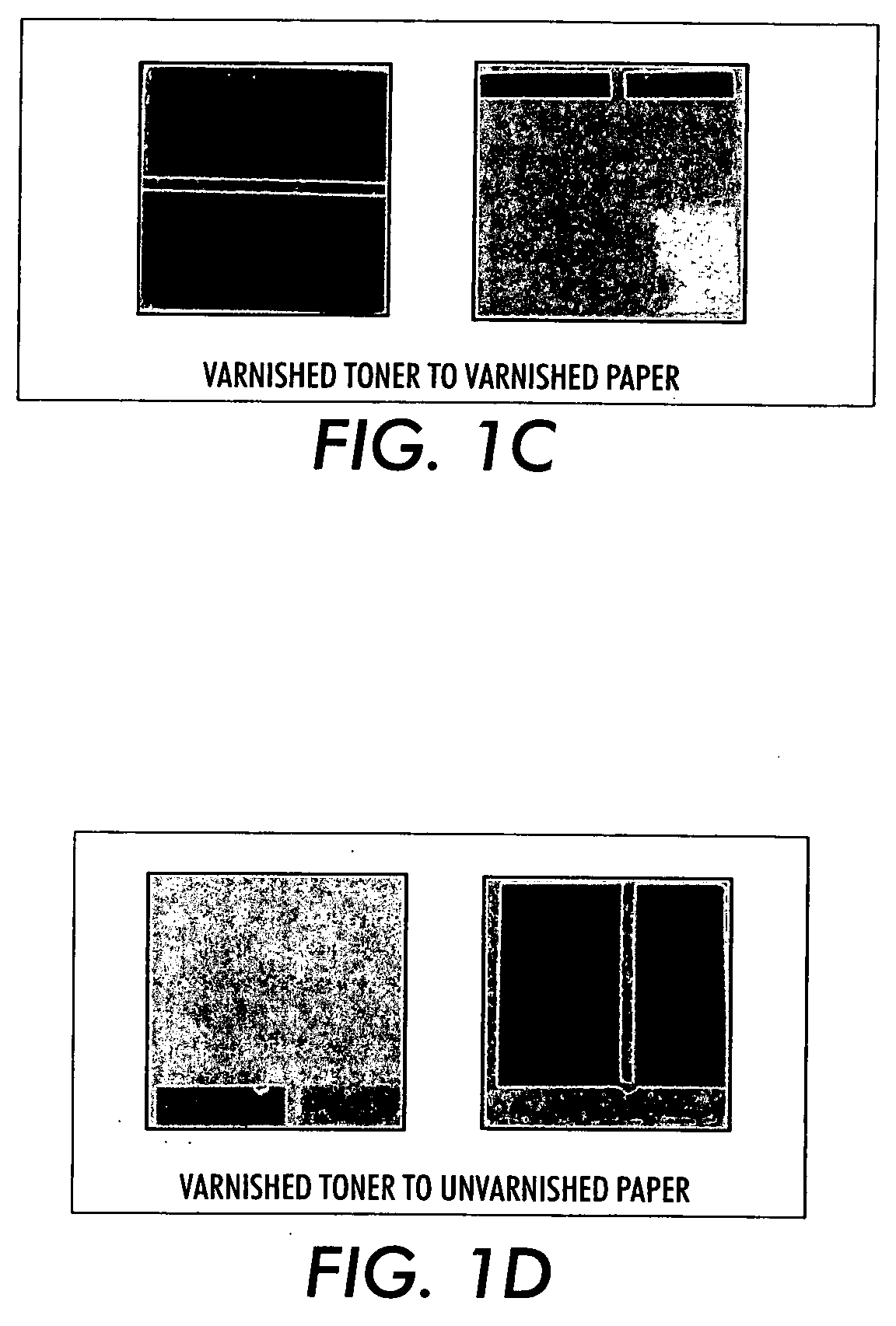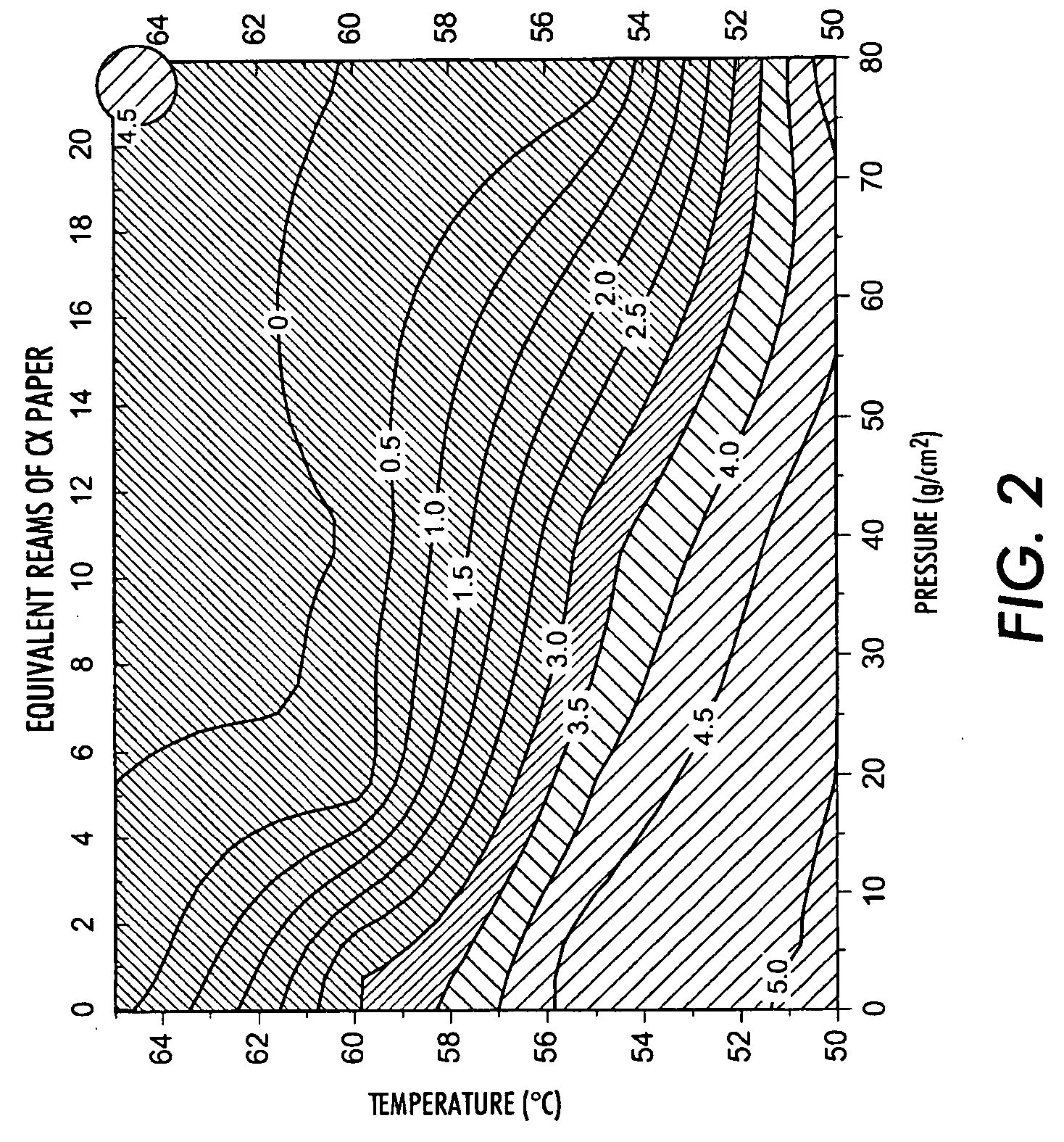Overprint compositions for xerographic prinits
- Summary
- Abstract
- Description
- Claims
- Application Information
AI Technical Summary
Benefits of technology
Problems solved by technology
Method used
Image
Examples
example 1
Overprint Composition Formulation
[0040] The components of the overprint composition were combined in the following order with brief agitation between each addition with an overhead mixer: 67.8% amine modified polyether acrylate oligomer (3388 grams Laromer® PO94F (BASF Corp.)), 27% propoxylated2 neopentyl glycol diacrylate (1351 grams SR-9003 (Sartomer Co., Inc.)), 5.1% UV photoinitiator (1-hydroxyclyclohexylphenyl ketone (241 grams Irgacure® 184 (Ciba-Geigy Corp.)) and ethyl-2,4,6-trimethylbenzoylphenylphosphinate (15 grams Lucirin® TPO-L (BASF Corp.))), and 0.1% polyether modified polydimethylsiloxane (5.0 grams BYK®-UV3510 (BYK Chemie GmbH)). The mixture was stirred at room temperature for about four hours at high shear with an overhead mixer until the oligomer dissolved.
[0041] The overprint composition was coated on a variety of xerographic prints at a thickness of about 5 microns. The composition was subsequently cured using a Dorn SPE three roll coater (Dorn SPE, Inc.) with ...
example 2
Document Offset—Comparative Example Using an iGen3® (Xerox Corp.) Toner
[0042] Using the overprint composition of Example 1, coated and uncoated xerographic prints and coated and uncoated xerographic paper were subjected to conditions of 70° C. at 50% relative humidity (r.h.) under 80 g / cm2 pressure for 24 hours. An iGen3® (Xerox Corp.) toner, a low-melt toner with a Tg of about 55° C., was used on the prints.
[0043] As illustrated in FIGS. 1A-1D, the overprint composition improved document offset (DO) from a grade of 0 (total substrate and toner failure) to a grade of 4.5 (no visible DO, slight tack between samples) on a scale of 0 (worst)-5 (best) (Table 2). FIG. 1A illustrates that toner from an uncoated print transferred to uncoated paper (DO=0). FIG. 1B illustrates that toner from a coated paper transferred to an uncoated print (DO=0). FIG. 1C illustrates that toner from a coated print did not transfer to coated paper (DO=4.5). FIG. 1D illustrates that toner from a coated print...
example 3
Document Offset—Comparative Example Using FCII Toner (Fuji Xerox Corp.)
[0045] Using the overprint composition of Example 1, coated and uncoated xerographic prints were subjected to various pressures (4-80 g / cm2) and temperatures (60-90° C.) at 50% r.h. for 24 hours. FCII toner, a low-melt toner with a Tg of about 62° C. from Fuji Xerox Corp., was used on the prints. The results were graded on a scale of 0 (worst)-5 (best) (Table 2) and mapped (FIGS. 3A-3B).
[0046]FIG. 3A shows that on an FCII toner-based print without the overprint composition, document offset failure begins at approximately 62° C. FIG. 3B shows that on an FCII toner-based print with the overprint composition, document offset failure begins above 70° C. at high pressure and above 90° C. at low pressure.
PUM
| Property | Measurement | Unit |
|---|---|---|
| Temperature | aaaaa | aaaaa |
| Temperature | aaaaa | aaaaa |
| Temperature | aaaaa | aaaaa |
Abstract
Description
Claims
Application Information
 Login to View More
Login to View More - R&D
- Intellectual Property
- Life Sciences
- Materials
- Tech Scout
- Unparalleled Data Quality
- Higher Quality Content
- 60% Fewer Hallucinations
Browse by: Latest US Patents, China's latest patents, Technical Efficacy Thesaurus, Application Domain, Technology Topic, Popular Technical Reports.
© 2025 PatSnap. All rights reserved.Legal|Privacy policy|Modern Slavery Act Transparency Statement|Sitemap|About US| Contact US: help@patsnap.com



